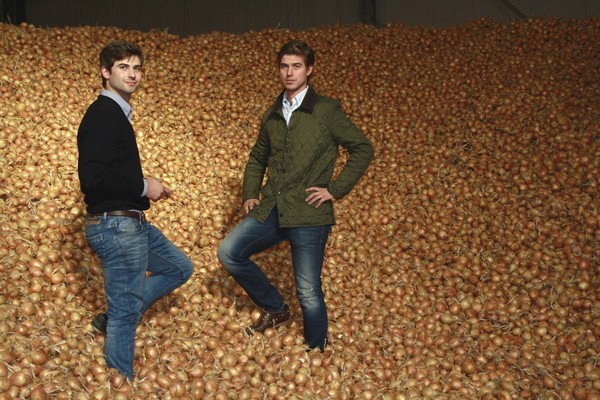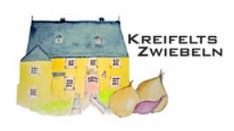The last onions from this year's harvest were harvested in the Rhineland in mid-October. Due to poor quality, the marketing year is shaping up to be challenging, says Konstantin Kreifelts, co-managing director of the Vettweiß-based producer and trading company of the same name. "The harvesting conditions and yields were okay overall. However, we have a lot of problems with bacteria and fungi this year, which are probably due to the strongly fluctuating weather conditions, i.e. drought followed by a long period of rain. As a result, we have an additional ten to 15 percent shortfall in sorting this year."
According to Kreifelts, the poor quality and many rejects will be particularly noticeable in the second half of the season. "I am relatively certain that the general reject rate will remain high, which will eventually be reflected in a tight supply situation. In recent years, we have been able to deliver until June or even July, but this year we have to expect a shorter delivery period. I currently assume that a nationwide supply of German onions will only be possible until May. In the north and east, the quality is still okay, but here in the west, as well as in southern Germany, it is below average."
 © Kreifelts Zwiebeln The brothers Konstantin and Hubertus Kreifelts manage the family business together.
© Kreifelts Zwiebeln The brothers Konstantin and Hubertus Kreifelts manage the family business together.
Price increase from week 49
The first price mark-ups for Rhenish produce are expected from CW49 The further price development is difficult to predict at the moment, according to Kreifelts. "The weather conditions in the remaining days of November and in December will play a decisive role here. If there are temperatures of around 17 degrees again before the end of the year, many will try to market their stored goods quickly, as the already weaker qualities do not keep well at high temperatures. The same applies to wet, humid weather. If it gets rather cold in December, the market will probably remain calm."
Optical sorting and area development
Almost 40 years ago, father Franz Kreifelts decided to start growing onions alongside traditional arable farming. Over the years, both the cultivation capacities and the trading activities were gradually expanded. Today, the two sons Hubertus and Konstantin are at the helm of the company and primarily supply food retail packaging companies. In addition, some of the goods are packaged in-house and delivered directly to food retailers. In order to meet the high demands of the retail trade in the future, optical sorting is already being considered.
"We still have a conventional system. However, the industry will develop in such a way that processing and sorting will take place under controlled conditions. This year in particular also shows everyone how necessary this technology will be in the future. We currently need twice as many staff to carry out the sorting work. In our case, the biggest obstacle to actually purchasing the system is the space required. We would need a more compact solution, otherwise we would inevitably have to build a completely new hall."
The area under cultivation for German onions has grown considerably in recent years, while consumption has stagnated. A lot is now also exported to the Netherlands. "However, we continue to act as a regional supplier and have noticed that the German consumer has a certain basic consumption and demand. However, I could imagine that the way in which onions are offered and purchased will change in the future, for example in the form of sliced and peeled onions. But this remains to be seen." There has already been a similar shift in packaging containers in recent decades, with 500 g and 1 kg nets now predominantly being used instead of 2 and 5 kg nets.
Optimization of existing processes
All in all, the company is quite positive about the future. "Our task now is to further optimize what we have built up over the past decades. We are taking the entire value chain into account - from cultivation to delivery," Kreifelts concludes.
For more information:
Konstantin Kreifelts
Kreifelts Zwiebeln
Burgweg 1
52391 Vettweiß
Tel.: 0 24 24 / 12 28
Fax: 0 24 24 / 73 37
[email protected]
www.kreifelts-zwiebeln.de










